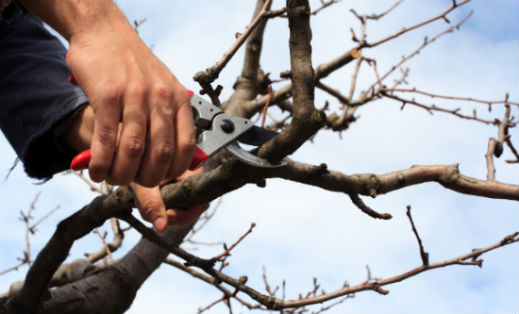
02 Oct Tree Trimming
-
The Set-up –
-
Firstly, ensure you are optimally trained in equipment usage. Different jurisdictions may have different regulations on the type of training that is required to both cut and trim trees.

-
If in case you are using an aerial bucket truck or the other boomed vehicle the operators need to be both skilled and trained in the safe operation of the vehicles mentioned above to ensure the safety of the operation.
-
Make sure that before you trim a tree, there is a thorough inspection of the area to identify any possible hazards such as the presence of power lines, cracked or broken limbs, etc. You need to take the necessary steps to prevent any unexpected injuries or accidents.
-
In case of any power lines being energized or “live” make sure you avoid both indirect or direct contact with the power line until either the utility or the hydro company has verified that they have de-energized the line.
-
Make it a point to mark off an area around the tree and prevent bystander access. Also, ensure you always work with another person who stays put on the ground.
-
Learning to recognize trees that are weakened by disease and even the types of trees easily prone to cracking are essential lessons in tree trimming.
-
Inspect the tree limbs for its strength before you climb the bark and branches to trim. Make sure you check for any cavities or rotten bits of branches to ensure you don’t suffer any last-minute crisis or severe injury while getting the operation started.
-
Also, Inspect the fall protection equipment and lines before every time that they are used. Tag and remove any defective or damaged equipment from service until it can either be replaced or repaired depending on the manufacturer’s recommendations.
-
Lastly, If you are using a ladder make sure to tie it off on a safe and secure branch.
-
The Operation –
-
Start off with breaking small and dead branches off using your bare hands as you climb. Later, remove all the larger branches using the proper tools in your toolbox.
-
Then place both your hands and feet on separate limbs and move with just one hand or foot at a time.
-
Either raise or lower the tools by connecting the hand lines to the end of tools.
The tools that are attached at the center may catch on branches. Tools that are smaller may be raised and lowered in a bucket attached to a hand line.
-
Utilize non-conductive tools and personal protective equipment if you are surrounded by electrical power lines in your area of work.
-
Ensure that you can view the cut that you are making so that you do not cut hand lines and safety ropes etc. without intending to.
-
Then attach a fiber or a leather guard on the saws that are held by a ring present on a worker’s belt.
-
Lastly, the series of OSH Answers present on chainsaws present safety information concerning their proper use and operation.
For more information contact Swed Hanson at Dinah Tree Service Boulder.

Sorry, the comment form is closed at this time.